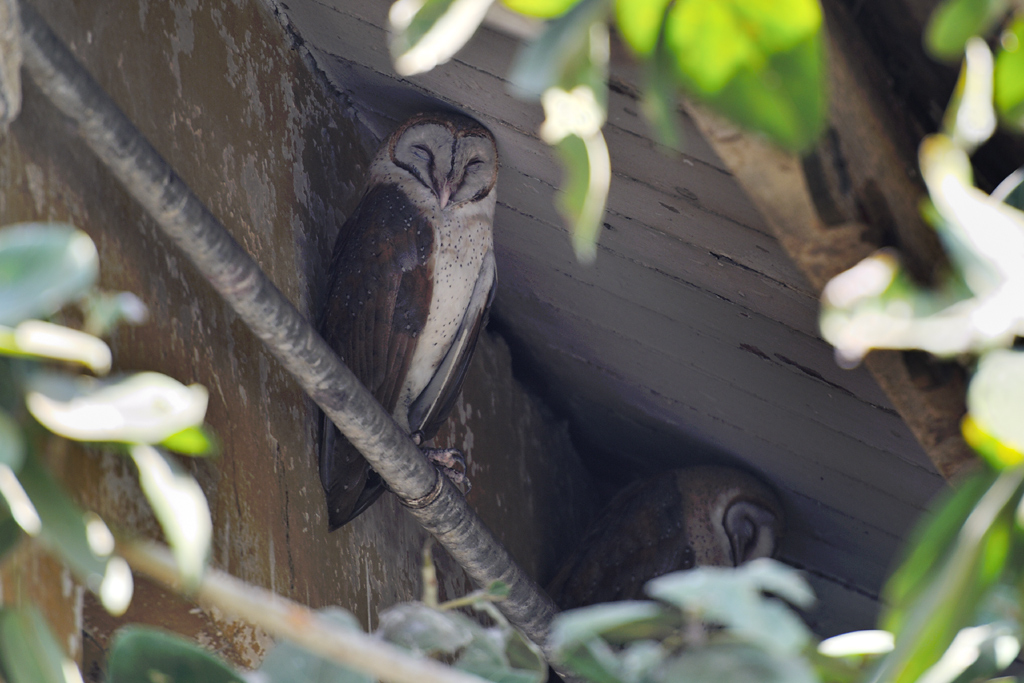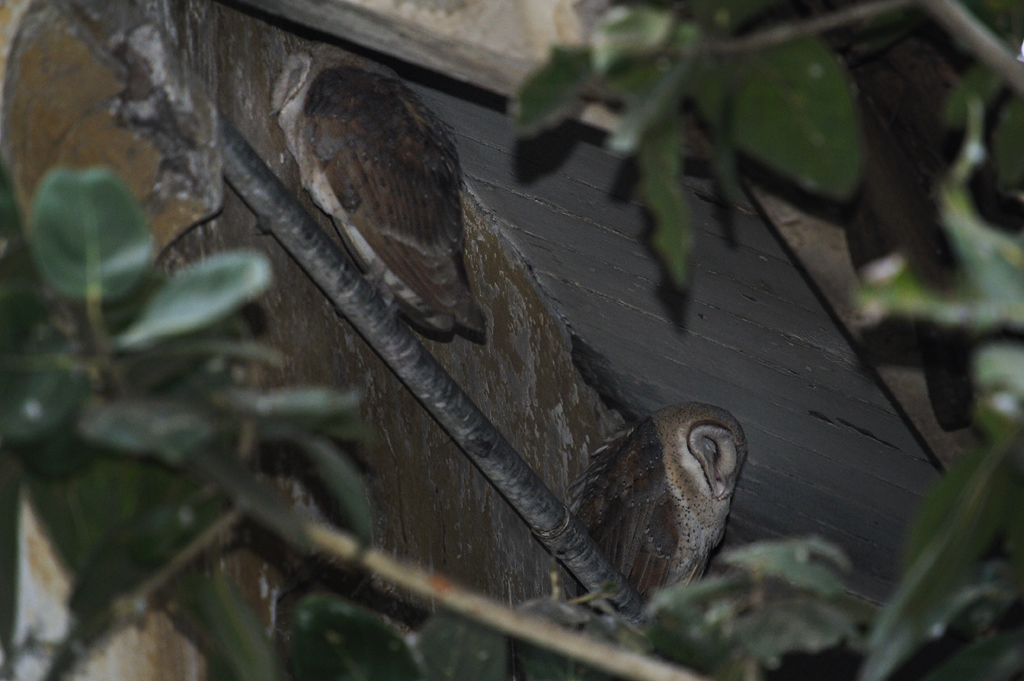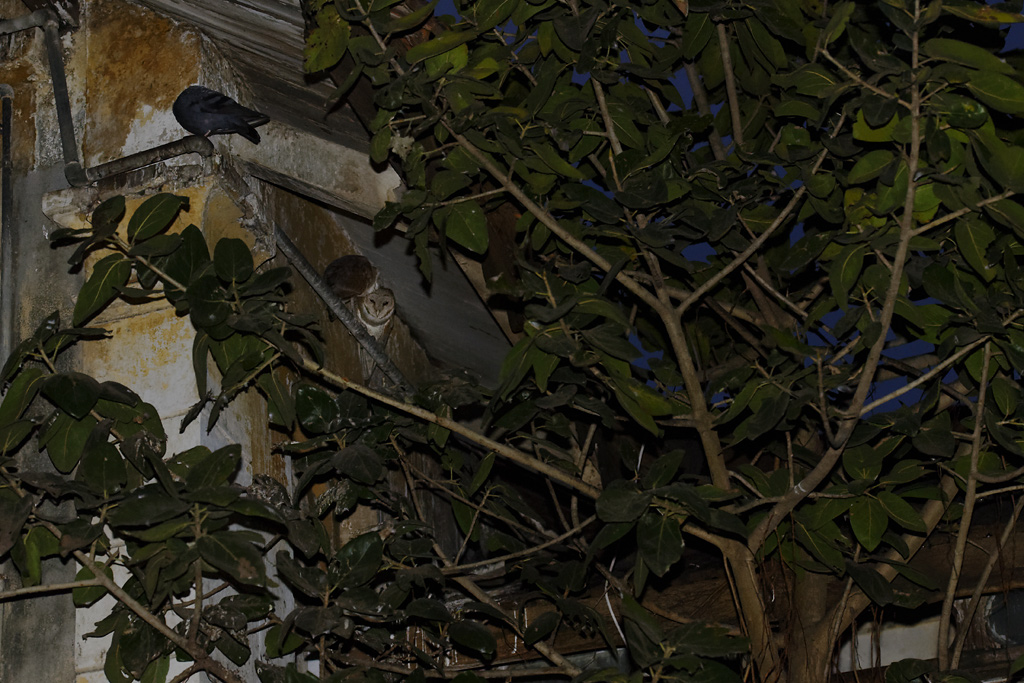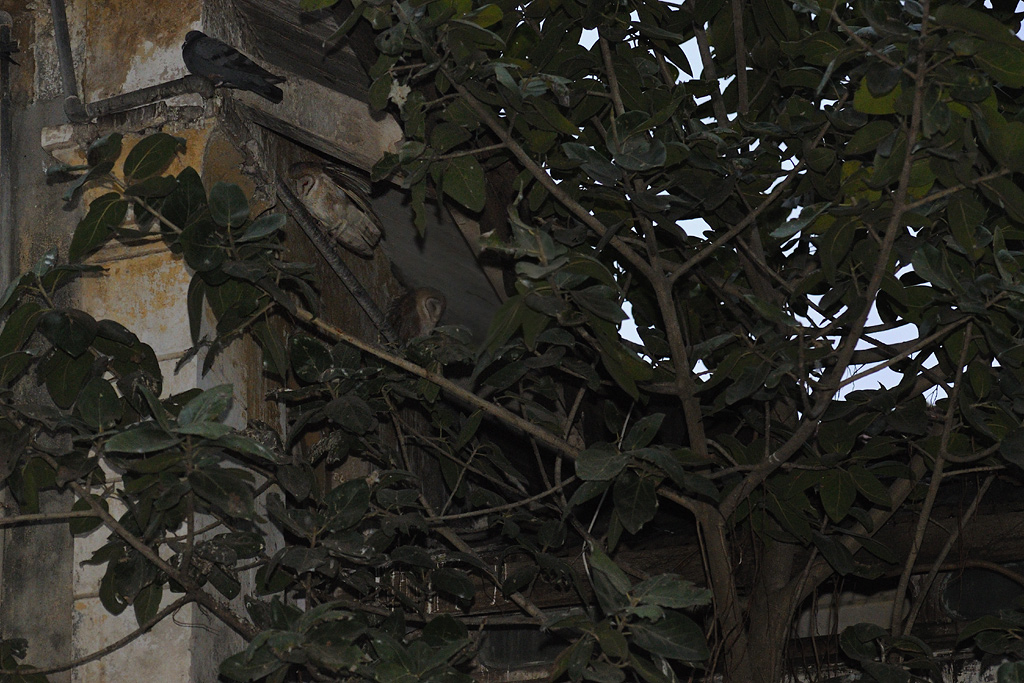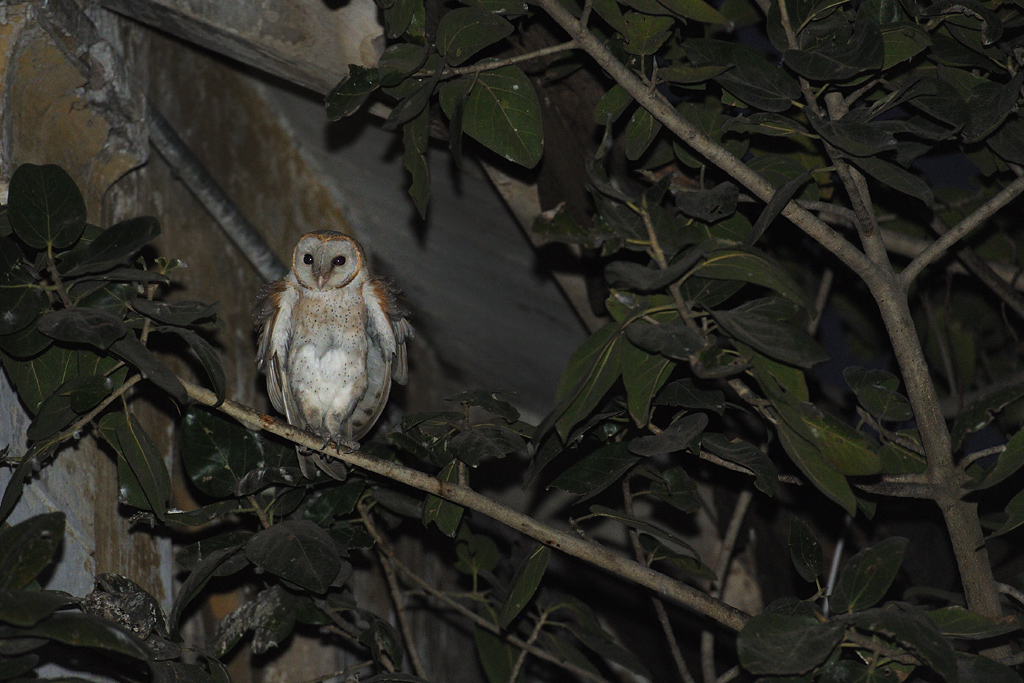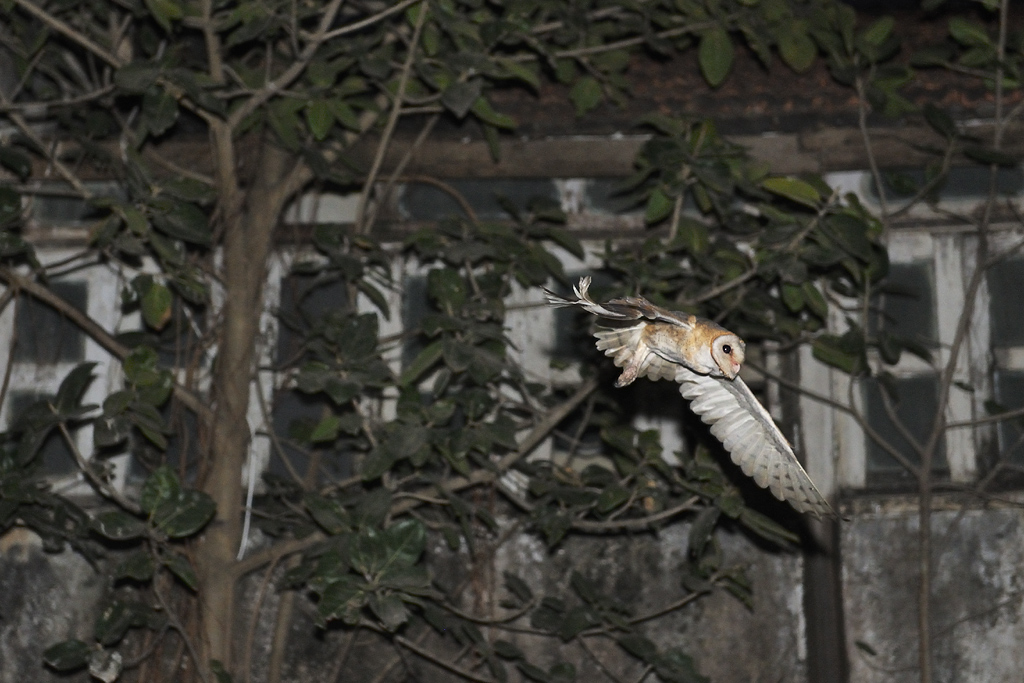Jochen Weber - Photography | Foto Documentaries
_____________________________________________________________________________________________________________________________
[Home]
The Indian Barn Owl
- Scientific name: Tyto Alba Stertens -
Observations on a Barn Owl family in South Mumbai
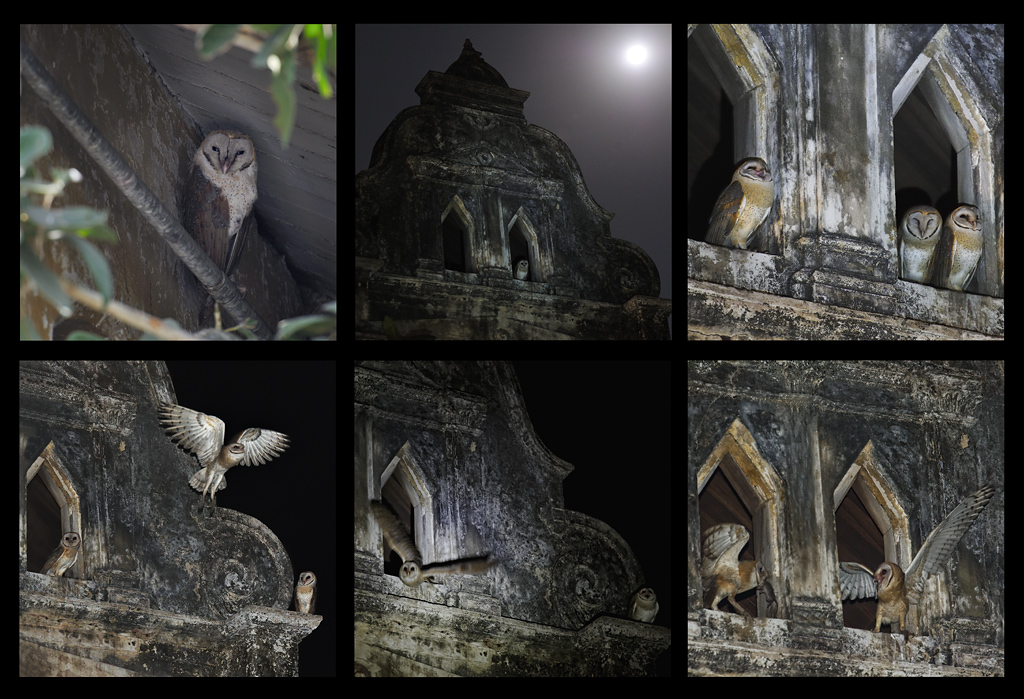
Tip: All small images in this documentary can be enlarged and viewed in a new window by clicking on them.
|
This abandoned and dilapidated building in South Mumbai is the observation site.
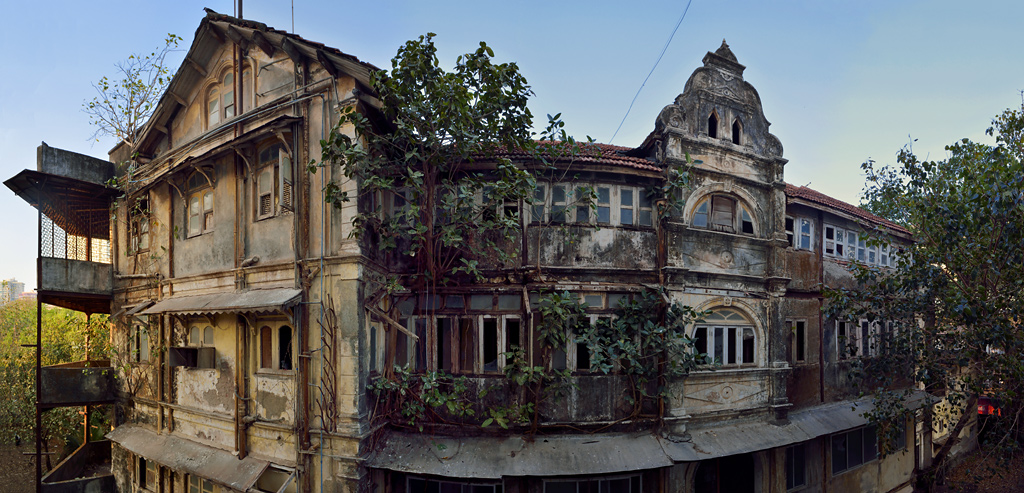 One or perhaps several barn owl families are nesting in the centre of the building’s gabled rooftop.
|
||||
| [Firstly, some information on the equipment and light sources used during the photography. I have used two Nikon cameras; the D3S, especially for high ISO photos, and the D7100. As lens I used the Nikkor 70-200 mm, 2.8 VRII, as well as, in part, the Tele-Converter TC-20E II. Daylight has been a good source of light for the photos of the roosting spot. The moon, the illuminated apartments in the building across and a small flashlight have served as a good source for night photography. The ISO settings have been between 12.800 and HQ.7; for the noise reduction, I have used DxO in Prime mode (really amazing). I have also used a stronger flashlight with ISO setting 6.400. After discussions with a biologist friend, some of the photographs have been taken with an external wireless fill-in-flash (SB 800) and a mounted softbox, the ISO setting here was between 1.000 and 1.250; the distance was about 25 metres.] | ||||
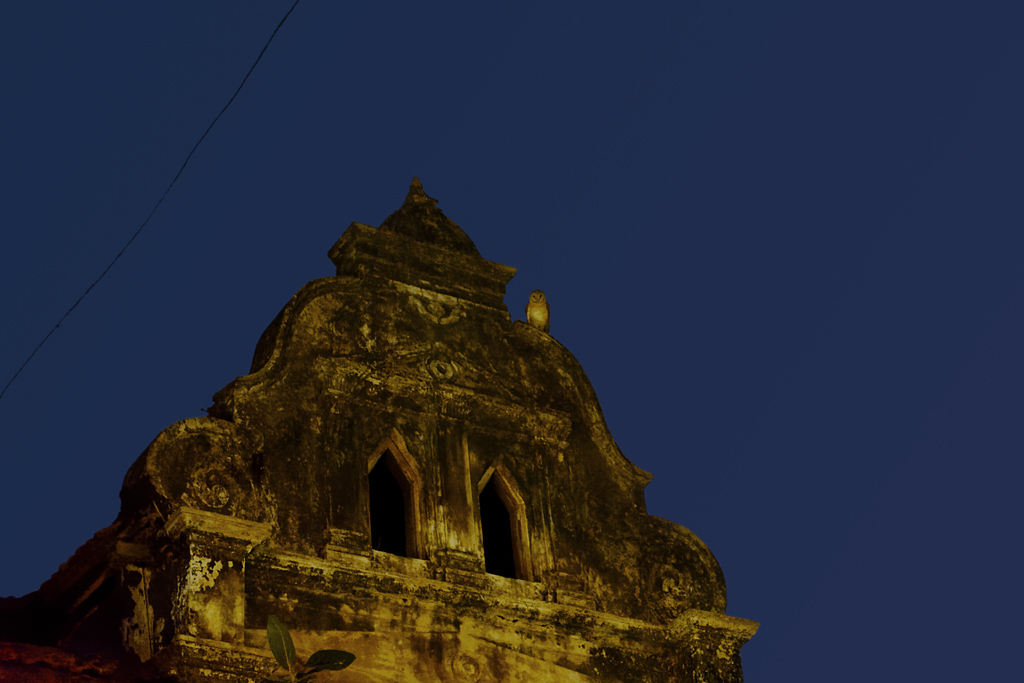 The sun has set, the building is faintly illuminated from the light of the apartments across… [ISO 16.126] 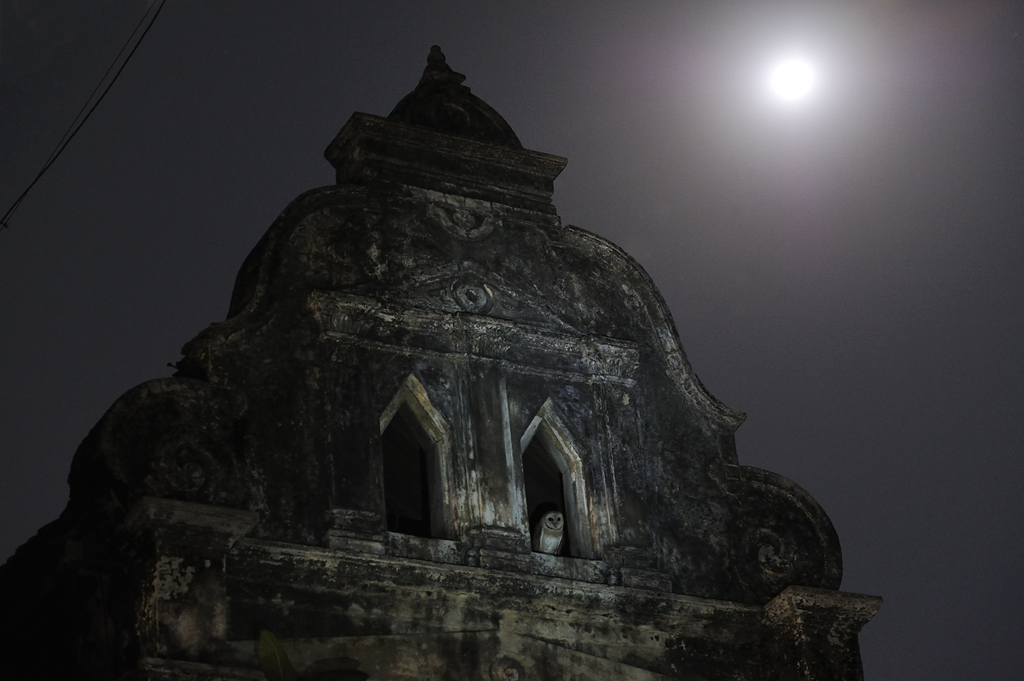 Their favourite nightly spot is in the windows or on a ledge 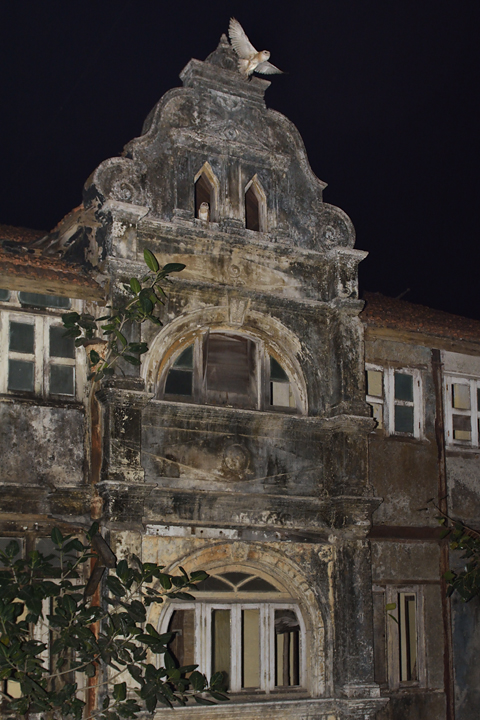 From there, they have the best view of the surroundings |
||||
| Audio Clip “Call of the Owl” (Duration: About 1 minute. The link opens in a new window) | ||||
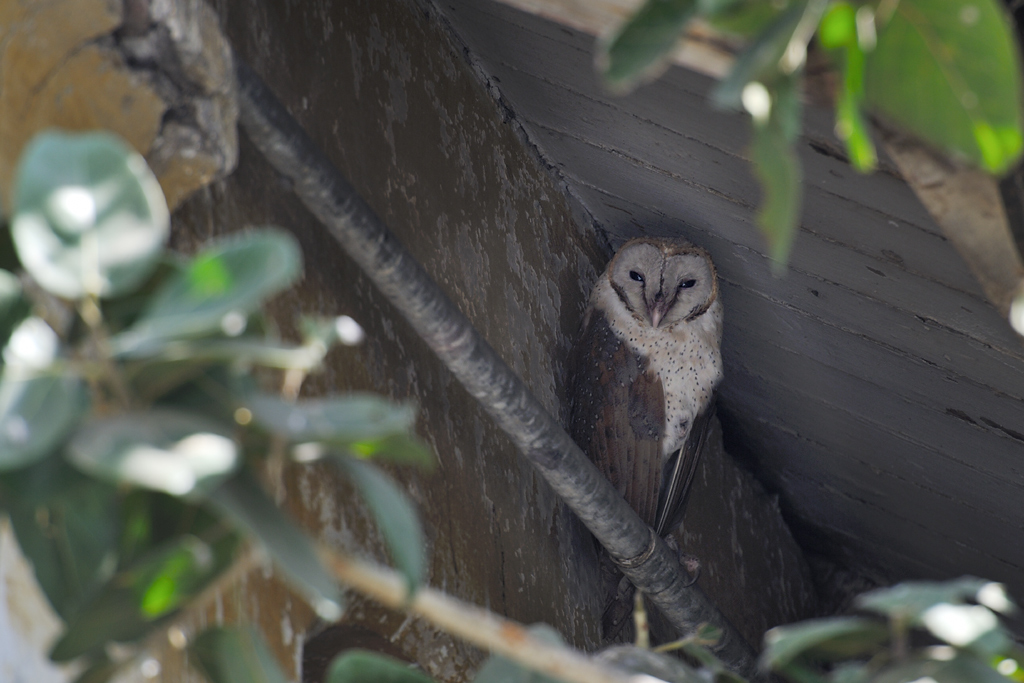 During the day they prefer to roost under the gabled rooftop
|
||||
|
||||
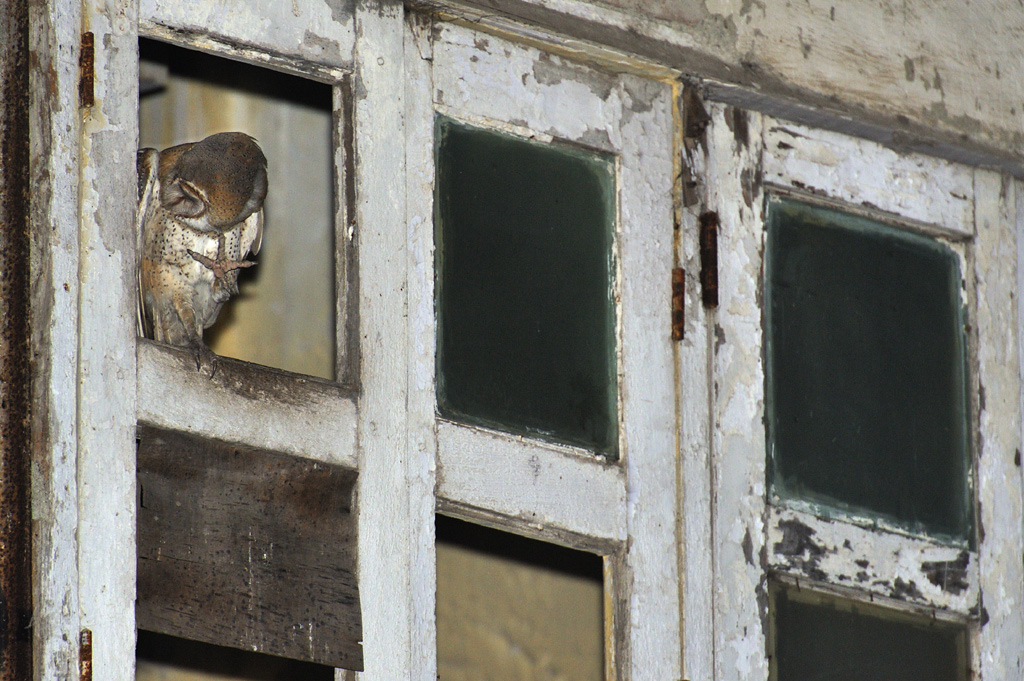 "Grooming Claw"
|
||||
|
||||
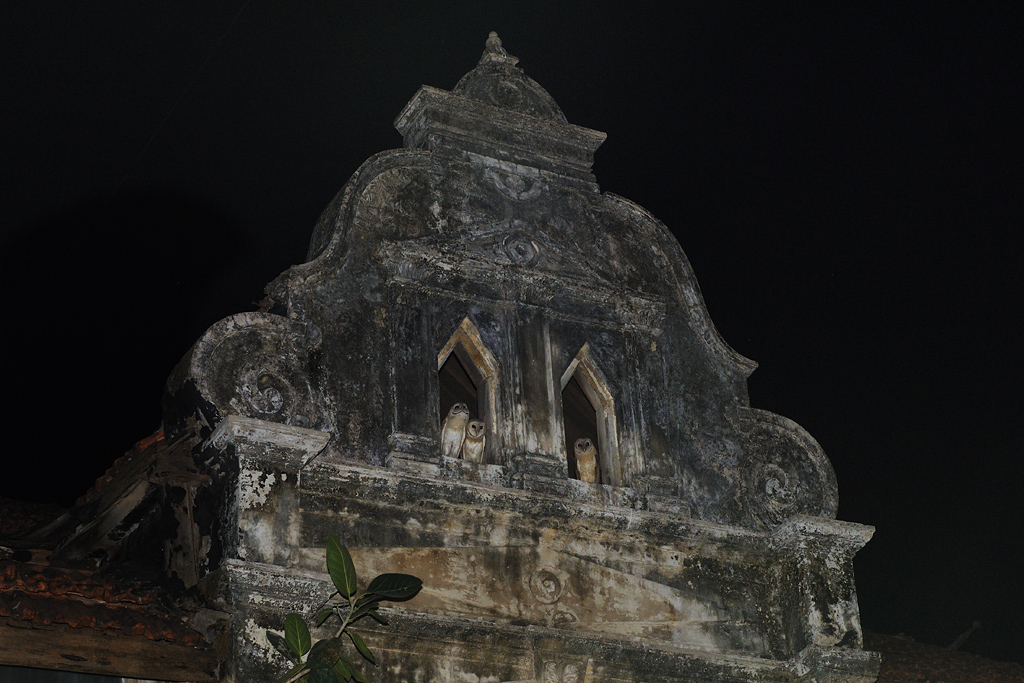 They observe everything intently; no movement or sound escapes them 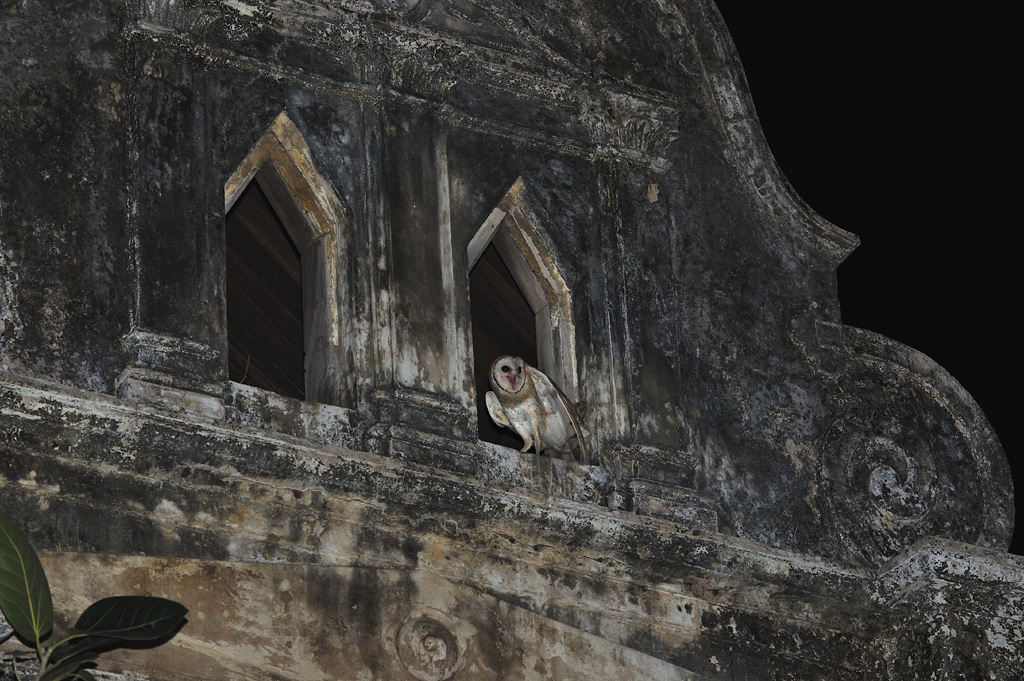 Threatening posture with outstretched wings
Their naturally erect posture enables them to remain well-hidden and camouflaged while perched on their shelters. When disturbed, they tend to squeeze closer to their perch and remain still. In extreme cases, they flee or spray their liquid excreta on their enemy. The owlets and the besieged adult owls that are unable to fly, threaten their enemies with outstretched wings and a threatening body posture. At the same time, they screech loudly and pretend to launch an attack. |
||||
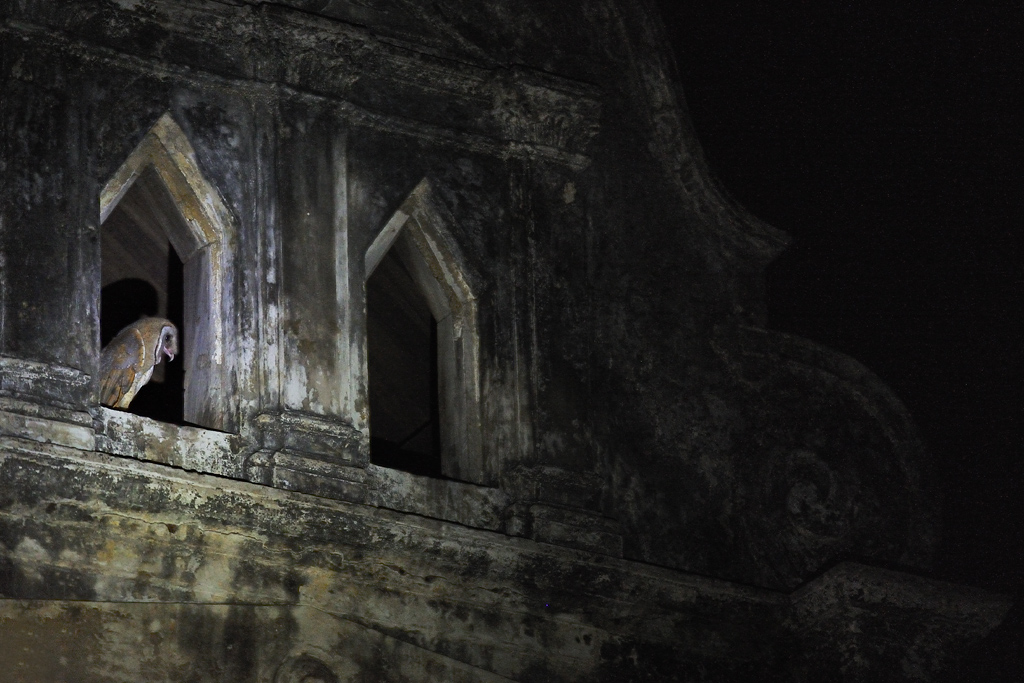 Territorial and … 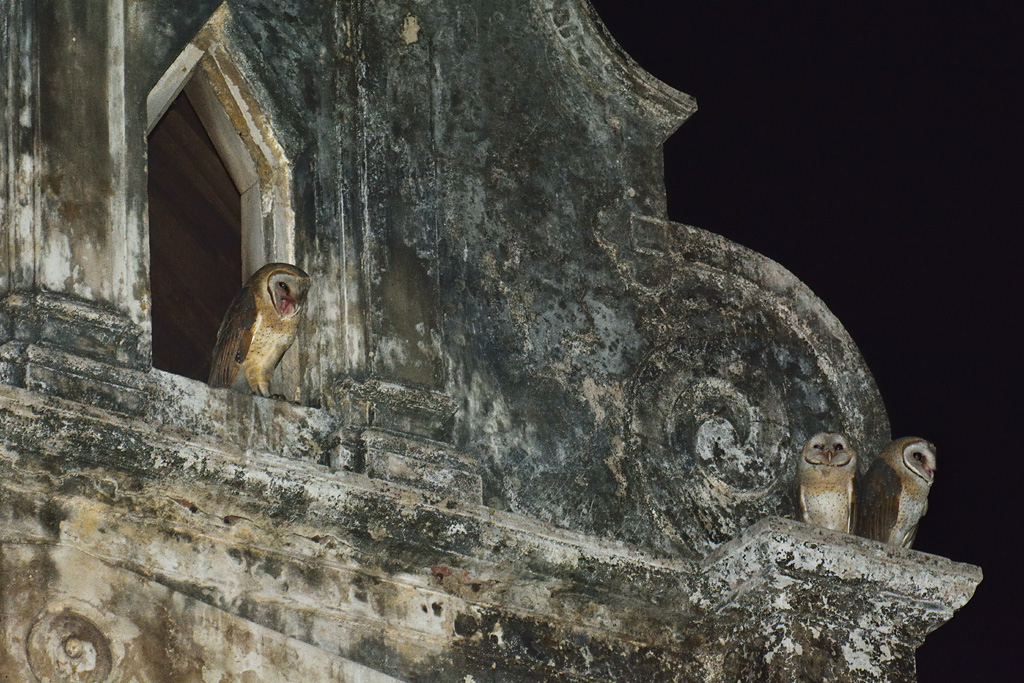 … courtship calls |
||||
The 3-12 eggs laid in 2 days take 30 days to incubate. It is the responsibility of the female to incubate the eggs and nurture them. The male is the provider till the owlets are about 3 weeks old. In about two months the owlets are ready to fly irrespective of their size. They shed their soft, downy feathers and directly develop the plumage of an adult owl. They begin practicing their hunting tactics once they are 31 days old. Provided the nesting ground is large enough, they start moving around within an area of about 2 meters, where they take their baby steps to learn hunting. This typically takes place in the morning and evening. From the 44th day, they attempt to take 2 meter long leaps. Unfortunately, I could not capture these moments with my camera. 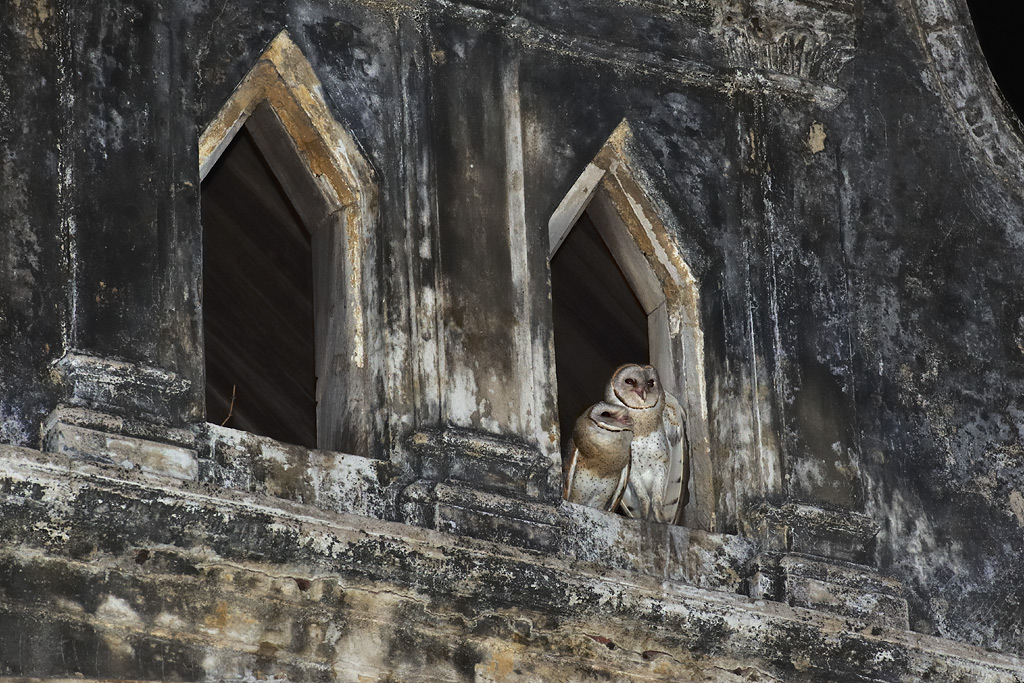 |
||||
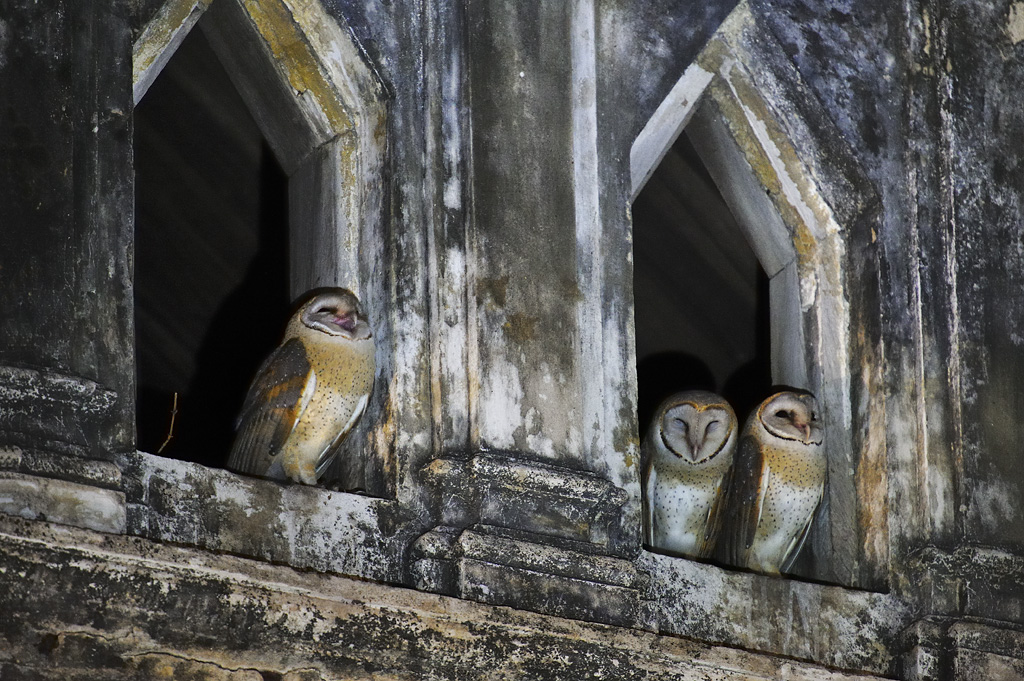 |
||||
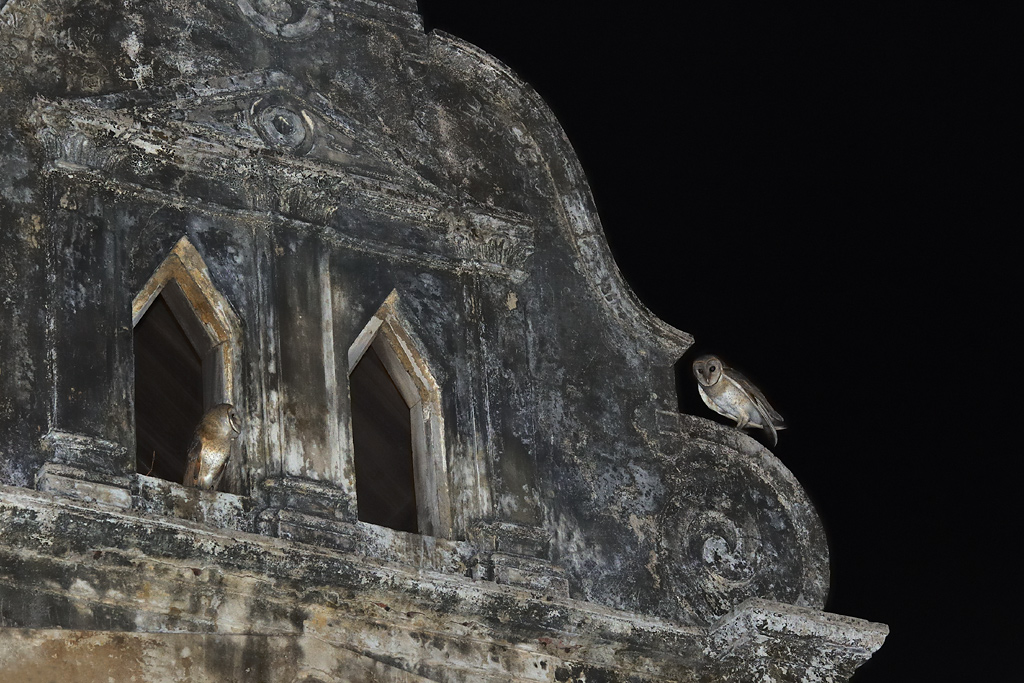 |
||||
Cliplet 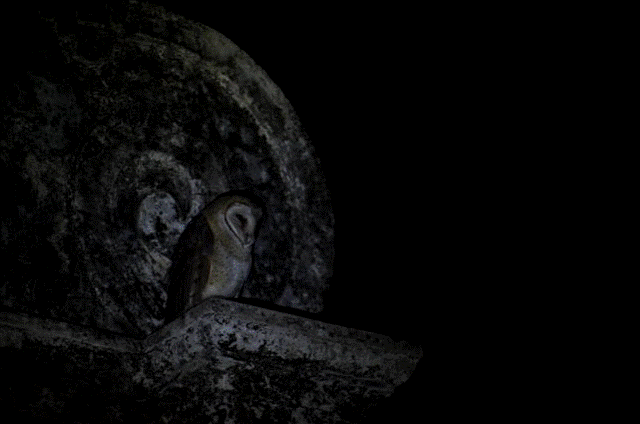 |
||||
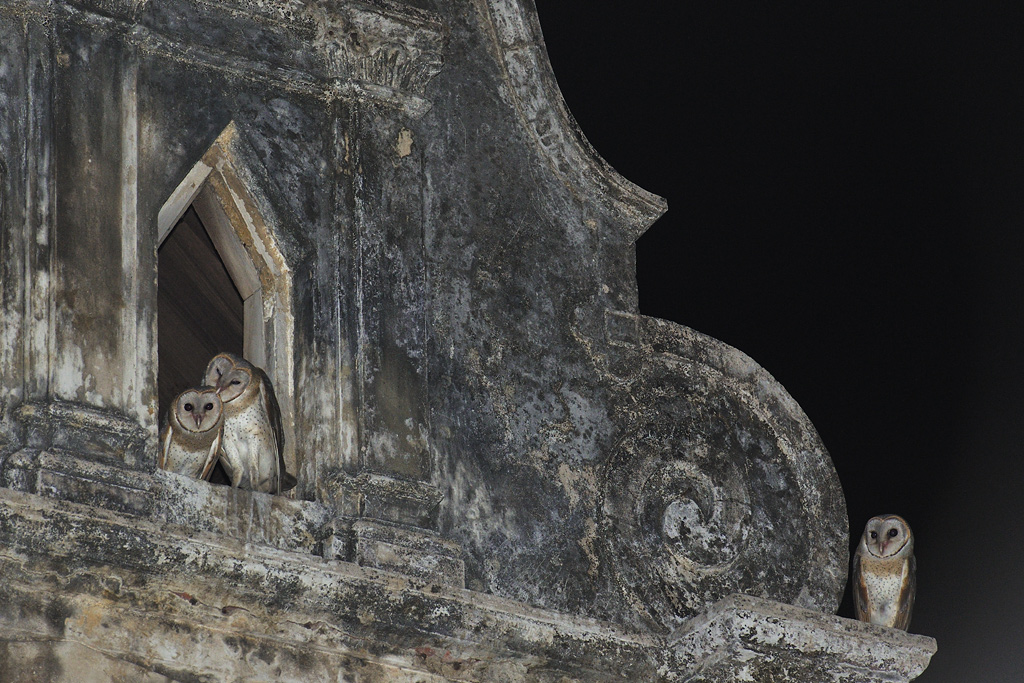 |
||||
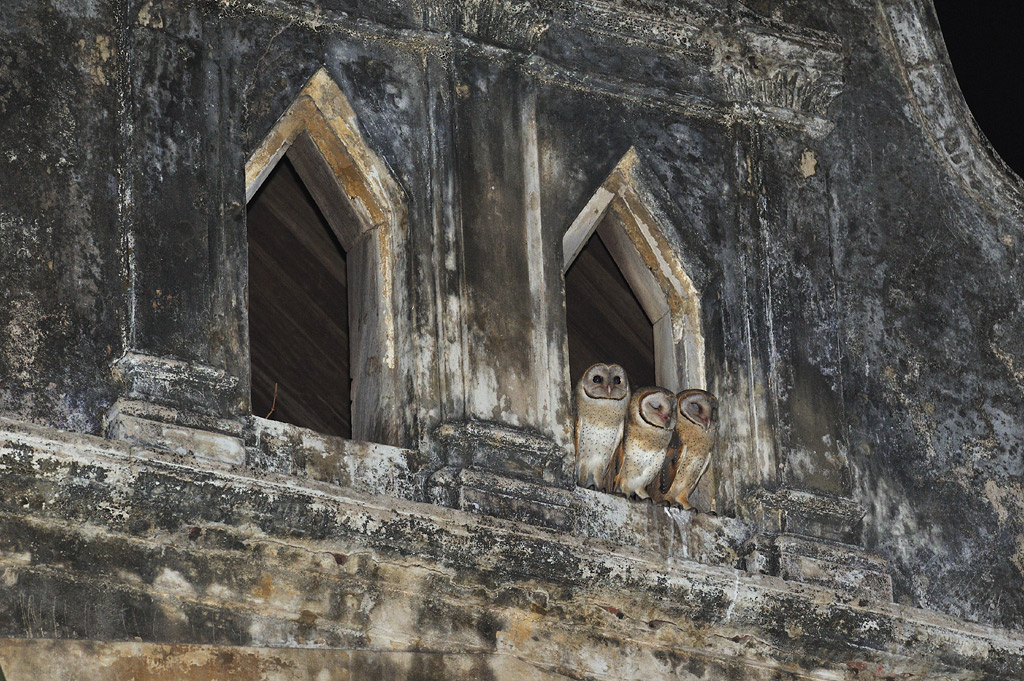 |
||||
© Text and Photos: Jochen Weber
________________________________________________________________________________________________________________________________
Page 1 | 2 [Home]
